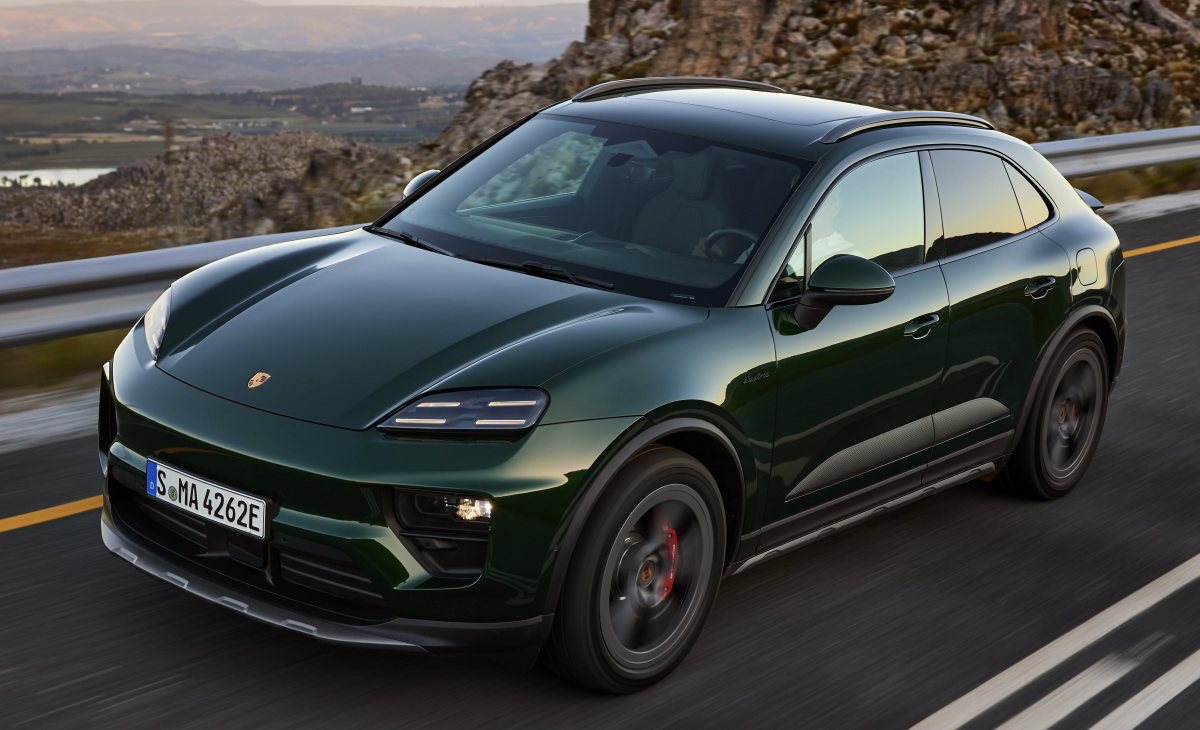Navigating The Chinese Market: The Struggles Of BMW, Porsche, And Competitors

Table of Contents
Intense Domestic Competition
The rise of powerful domestic Chinese automakers presents a significant threat to established luxury brands like BMW and Porsche. This intense competition is fueled by several factors.
Rise of Local Brands
The rapid growth of domestic Chinese automakers such as BYD, NIO, and Xpeng is undeniable. These brands are not only offering competitive electric vehicles (EVs) but also sophisticated technology and attractive pricing, directly impacting the market share of international players.
- Increased affordability and technological advancements of domestic EVs: Chinese consumers are increasingly drawn to the value proposition offered by domestic EVs, which often boast comparable or superior technology at lower price points.
- Strong brand loyalty among Chinese consumers towards domestic brands: Patriotism and a growing sense of national pride contribute to strong brand loyalty for homegrown automotive companies. This presents a significant hurdle for foreign brands to overcome.
- Government support and subsidies for local EV manufacturers: Government initiatives and subsidies further boost the competitiveness of domestic brands, making it harder for foreign automakers to compete on price.
Aggressive Pricing Strategies
Even within the luxury segment, Chinese consumers are highly price-sensitive. International brands must adopt sophisticated pricing strategies to remain competitive without sacrificing profitability.
- The need for localized pricing strategies to compete with domestic brands: International brands must carefully analyze the pricing strategies of domestic competitors and adjust their own accordingly to remain attractive.
- The impact of import tariffs and taxes on pricing: Import duties and taxes significantly increase the cost of imported vehicles, putting international brands at a disadvantage compared to locally produced cars.
- Balancing profitability with market competitiveness: The challenge lies in finding a balance between maintaining healthy profit margins and offering competitive prices to attract Chinese consumers.
Understanding Cultural Nuances and Consumer Preferences
Successfully penetrating the Chinese market requires a deep understanding of the cultural context and constantly shifting consumer preferences. This extends beyond simply translating marketing materials.
Digital Marketing and Social Media
Reaching Chinese consumers effectively hinges on a robust online presence and sophisticated social media strategies, specifically tailored to the unique landscape of Chinese platforms.
- The importance of localized digital marketing campaigns: Generic marketing campaigns will likely fail. Strategies must be specifically designed to resonate with Chinese consumers and their cultural values.
- Leveraging key opinion leaders (KOLs) and influencers: Collaborating with influential figures on popular platforms like WeChat and Weibo is crucial for building brand awareness and trust.
- Understanding the nuances of Chinese social media platforms: WeChat, Weibo, and other platforms operate differently from their Western counterparts, requiring specialized strategies and content formats.
Adapting to Evolving Consumer Tastes
Chinese consumer preferences are dynamic, influenced by rapid technological advancements and evolving lifestyles. Staying ahead of the curve is vital for international automakers.
- The growing demand for electric and hybrid vehicles: China's commitment to environmental sustainability is driving strong demand for electric and hybrid vehicles, a segment where domestic brands are rapidly gaining ground.
- The increasing importance of advanced driver-assistance systems (ADAS): Chinese consumers are increasingly valuing safety features like advanced driver-assistance systems.
- The preference for connected car features and integrated digital services: Connectivity and integrated digital services are becoming essential features for attracting tech-savvy Chinese consumers.
Navigating Regulatory and Legal Landscape
The regulatory environment in China presents significant complexities for international automakers. Understanding and navigating these regulations is critical for compliance and success.
Stringent Emission Standards
China's commitment to reducing emissions has resulted in some of the world's most stringent emission regulations, forcing automakers to accelerate the transition to electric and hybrid vehicles.
- Compliance with China's increasingly stringent emission standards (CAFE standards): Meeting these standards requires substantial investment in research and development and adapting production processes.
- Investment in electric vehicle infrastructure: The need to support the growing EV market with charging infrastructure adds another layer of complexity and investment.
- Meeting the requirements for local production and sourcing: Regulations often favor local production and sourcing, presenting challenges for international automakers.
Complex Bureaucracy and Regulations
The Chinese regulatory landscape is notoriously complex, demanding significant expertise and resources for navigating the bureaucratic processes.
- Understanding and navigating the complexities of import and export regulations: Import and export regulations are intricate and subject to change, requiring continuous monitoring and adaptation.
- Dealing with local government authorities and obtaining necessary permits: Securing the necessary permits and approvals can be a lengthy and challenging process.
- Managing intellectual property rights and legal issues: Protecting intellectual property rights in China requires a strong understanding of local laws and effective legal strategies.
Conclusion
Successfully navigating the Chinese market demands a multi-faceted approach. International brands like BMW and Porsche, despite their established presence, face persistent challenges from domestic competition, evolving consumer preferences, and a complex regulatory framework. To thrive in this dynamic environment, international automakers must prioritize understanding Chinese cultural nuances, adapt their product offerings to local tastes, invest strategically in digital marketing and technological innovation, and become intimately familiar with the intricacies of the Chinese legal and regulatory landscape. Mastering the complexities of the Chinese market is paramount for long-term success in this pivotal automotive sector. Ignoring these challenges risks losing significant market share to increasingly competitive domestic brands. Are you ready to tackle the challenges and unlock the potential of the Chinese automotive market?

Featured Posts
-
 Tam Krwz Awr Ayk Khatwn Mdah Ayk Ghyr Mtwqe Waqeh
May 12, 2025
Tam Krwz Awr Ayk Khatwn Mdah Ayk Ghyr Mtwqe Waqeh
May 12, 2025 -
 Ufc 315 Complete Main Card Unveiled Featuring Muhammad Vs Della Maddalena
May 12, 2025
Ufc 315 Complete Main Card Unveiled Featuring Muhammad Vs Della Maddalena
May 12, 2025 -
 Grand Slam Delight Jamaica Observers Coverage
May 12, 2025
Grand Slam Delight Jamaica Observers Coverage
May 12, 2025 -
 Ufc 315 Fight Card Muhammad Della Maddalena And More
May 12, 2025
Ufc 315 Fight Card Muhammad Della Maddalena And More
May 12, 2025 -
 Alcatraz Prison A Renewed Focus On Its Famous Escape Following Trumps Comments
May 12, 2025
Alcatraz Prison A Renewed Focus On Its Famous Escape Following Trumps Comments
May 12, 2025
Latest Posts
-
 From Kamala Harris Influencer To Congressional Candidate Gen Zs Political Rise
May 13, 2025
From Kamala Harris Influencer To Congressional Candidate Gen Zs Political Rise
May 13, 2025 -
 Cp Music Productions A Father Son Musical Journey
May 13, 2025
Cp Music Productions A Father Son Musical Journey
May 13, 2025 -
 The Sound Of Family Cp Music Productions A Father And Son Duo
May 13, 2025
The Sound Of Family Cp Music Productions A Father And Son Duo
May 13, 2025 -
 Cp Music Productions The Father Son Duo Redefining Musical Excellence
May 13, 2025
Cp Music Productions The Father Son Duo Redefining Musical Excellence
May 13, 2025 -
 Cp Music Productions A Father And Son Musical Duo
May 13, 2025
Cp Music Productions A Father And Son Musical Duo
May 13, 2025
